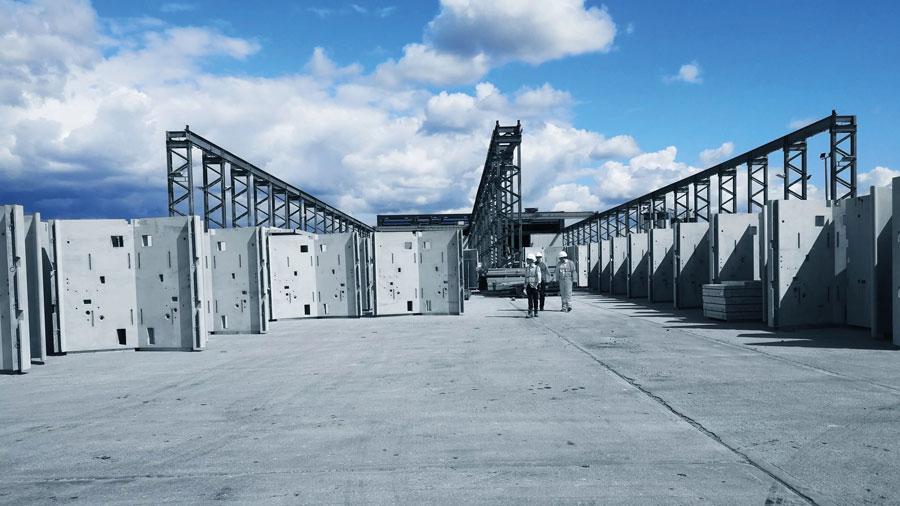Pilot puts decarbonising precast concrete on the map
A decarbonising precast concrete project demonstrates that a 40% reduction in emissions is possible by optimising the design, mix and transportation across the supply chain.

A decarbonising precast concrete project demonstrates that a 40% reduction in emissions is possible by optimising the design, mix and transportation across the supply chain.
Funded by Innovate UK, the pilot is led by Akerlof, a design-for-manufacture company, alongside manufacturer Forterra and superstructure and façade construction specialist PCE. It uses a holistic approach to measure all of the partners’ activities. The team then outlines carbon reduction measures that are technically ready and easy to execute, while making sure the precast concrete maintains its core attributes and is commercially viable.
The project also includes benchmarking calculations to identify carbon quantums in the structure and then optimises different solutions for each stage, including design, manufacturing mix and installation.
‘Our research proves that if you have a long-term view and can develop a repeatable design and pipeline of work that captures mature data through building information modelling (BIM) processes, you can create a platform for continuous improvement,’ says John Handscomb, Founding Partner of Akerlof.
‘Our approach has enabled the right partners from the value chain to review every decision through the lens of carbon, resulting in both significant and marginal savings.
‘The first thing we did was completely map the entire process and understand where carbon sat within that entire process. So, from all those material manufacturer points, all the way through to interactions within the building…And then look at what interactions occurred, and why they occurred and how, what effect they had on the carbon footprint of the building.’
The team has calculated that carbon reduction throughout the supply chain can be achieved by improving the concrete mixes, achieving a carbon saving of 12%. They are increasing the supplementary cementitious materials (SCMs) content – ground granulated blast-furnace slag is deemed the most appropriate substitute – and incorporating admixture technology.
The next focus is the structural design, cutting down embodied carbon by 5%. Data have been extracted from the HMP Glen Parva Houseblock Revit model and assessed by PCE and engineering company Curtins. The data has then been used to develop heat maps within the BIM model, to visually communicate the carbon content of each precast component.
By reviewing production and logistics operations, the team calculates effective ways for saving 3% embodied carbon, such as through the adoption of a silo-fed system negating the need for additional palletised deliveries, sourcing precast components more locally, and use of biodiesels and electric cranes.
A lifecycle assessment from cradle to grave has resulted in a Concrete Carbon Calculator to assess operational use, deconstruction and demolition, transport and disposal, waste processing, and benefits and loads beyond the system boundary.
The project outcomes are intended to be transferable to other sectors and development types, and the team believe that the process could also apply to a wider scope of products and services, including cladding, mechanical services, electrical services and insulation, and drive embodied carbon reduction studies across different building materials.







